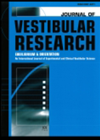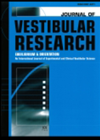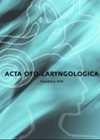
Journal Reviews
A predictor of successful treatment of posterior canal BPPV
Reversal of nystagmus on returning to the upright sitting position from the Hallpike position is a common observation. However, its relevance as a predictor of a successful canal repositioning manoeuvre (CRM) is not known, hence this study. The retrospective study...
Reliability of modified Dix-Hallpike test
Modifications of the Dix-Hallpike (DH) are sometimes necessary when the traditional DH is not feasible. The absence of any formal studies on modified DH was the idea behind this multicentre (three academic centres), prospective, randomised, single blinded and controlled clinical...
Clinical features of BPPV in Meniere’s disease
It is an observation that BPPV appears to be commonly associated with Meniere’s disease (MD). This five-year study compared features and treatment outcomes between patients presenting with MD in conjunction with unilateral BPPV and a group of BPPV patients without...
BPPV and bone mineral density
Over the years, attempts have been made to identify modifiable risk factors for BPPV. Due to the chemical composition of otoconia, the role of calcium metabolism and its associated conditions have been studied with no firm conclusions. The authors studied...
Comparison between objective and subjective BPPV
BPPV presentation in ENT clinics is variable. The objective of this study was to examine differences in demographic and clinical features, as well as treatment outcomes, between classic objective BPPV (O-BPPV) and subjective BPPV (S-BPPV). Unlike classic BPPV (with nystagmus),...








